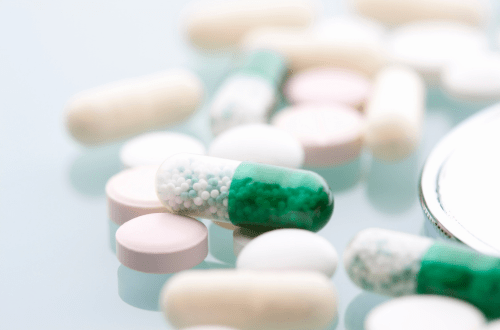Pharmacovigilance and Drug Safety in 2024: Insights from a Leading CRO
The World Health Organization (WHO) defines pharmacovigilance, also known as drug safety, as the “science and activities relating to the detection, assessment, understanding, and prevention of adverse effects or any other drug-related problem.” Pharmacovigilance is an integral component of clinical trials, ensuring the safety and well-being of patients participating in clinical trials and safeguarding public health as a whole. Considering safety outcomes are key endpoints in most drug trials, there is a considerable market for supporting pharmacovigilance activities. Globally, the drug safety market size was valued at US$7.32 billion in 2023 and is estimated to grow at a compound annual growth rate (CAGR) of 7.0% over the forecast period from 2023 to 2030.
One critical stakeholder helping to make this steady market growth possible are contract research organizations (CROs), which play an instrumental role in ensuring the safety and effectiveness of the drugs being evaluated. Many leading CROs like TFS HealthScience have specialized pharmacovigilance and drug safety teams to support sponsors in monitoring adverse drug reactions (ADRs), identifying potential safety risks, and developing effective risk management strategies. In this article, we offer our insights as a leading CRO into the current landscape of the pharmacovigilance industry, as well as global trends in drug safety to watch for in 2024. Read on to learn more!
Current State of the Pharmacovigilance and Drug Safety Industry
A recent survey of 100 pharmacovigilance professionals across the United States and Europe provided the following valuable insights into the current state of these processes within clinical trials in the life sciences industry.
1. Automation Uptake: ~25% of the survey respondents reported their organizations are currently operating with 20% automation in Case Processing, but this is expected to rise to 60% and above in the next year.
2. AI/ML Adoption: Despite the increasing adoption of artificial intelligence and machine learning (AI/ML), the survey revealed that only 5% of organizations are extensively utilizing AI/ML for adverse event (AE) monitoring and intake.
3. Priority Areas in Pharmacovigilance: Approximately 40% of respondents are looking to “elevate compliance,” 30% are focused on “elevating quality,” and 29% aim to achieve “operational efficiency.” This indicates a strong and balanced commitment to achieving regulatory compliance, patient safety, and process optimization.
However, despite the optimism surrounding the potential of technology to make these improvements, barriers to adoption still exist. The primary barriers include a lack of funding or investment, challenges in integrating with existing pharmacovigilance operational ecosystems, and difficulty obtaining the right skill sets in-house. To address these barriers, the survey findings also showed a tendency towards increased outsourcing of drug safety operations. Specifically, the percentage of organizations outsourcing more than 60% of their operations was found to be 21% for Signal and Risk Management, 26% for AE Monitoring and Case Intake, and 40% for Case Processing. This trend is beneficial to strengthening pharmacovigilance and drug safety processes considering outsourcing to leading CROs allows sponsors to take advantage of their expertise, cost efficiency, and technological advancements.
Global Trends in Pharmacovigilance and Drug Safety to Watch for in 2024
Looking ahead, global trends in pharmacovigilance and drug safety are expected to be significantly influenced by the rapid evolution of technology in the following categories.
1. Emergence of Generative AI
First, the use of generative AI (GenAI), AI that can create original content in response to user prompts, within the pharmaceutical industry has been identified as a vital factor for the future of the pharmacovigilance and drug safety industries. This technology presents opportunities to streamline any inefficiencies in current processes while potentially driving down costs. Although still in its early stages, tools based on GenAI are expected to be integrated more seamlessly into the industry’s workflow instead of existing as standalone aids. However, the models will require meticulous training to ensure the outputs are consistently accurate, in addition to safeguarding against data breaches and data inconsistencies.
2. Applications of AI in Indication Prioritization
The application of AI has also been becoming increasingly significant in selecting how to prioritize indications. Many new drugs can be used across multiple therapy areas; therefore, AI and ML offer the ability to cast a wider net, supporting the decision-making process.
3. Advancements in AE Monitoring
In terms of handling AE data, several advancements are expected this year. For example, the use of optical character recognition to digitally convert inbound case forms is expected to continue. This particular application of AI eliminates the need for manual initial case entry. Neural machine translation is also expected to continue being implemented by sponsors and CROs for global case processing in pharmacovigilance and drug safety monitoring units, resulting in greater cost savings from faster processing and reduced translation needs for global safety CROs. Furthermore, rule-based automation tools like duplicate searches, case compare, merge, and auto triage cases, as well as the application of natural language processing (NLP) for extracting and processing literature for case-related information, are expected to be more widely used this year.
4. Regulatory Challenges with Rapid Adoption of Intelligent Automation Technology
From a regulatory perspective, one of the major challenges on the horizon is the rapid adoption of intelligent automation technology. Despite being promising in terms of efficiency and effectiveness, this trend also presents considerable risks, including regulatory pitfalls and compliance challenges. To mitigate these potential risks, pharmaceutical and biotech companies should aim to adopt a thoughtful and phased approach to technology adoption for drug safety monitoring. This approach should include time for retraining and repurposing staff to ensure the human element of the industry, its greatest asset, is not lost to technology.
Another related regulatory challenge is for pharmacovigilance CROs and sponsors to be prepared for new country regulations updated by global health authorities and health technology assessment (HTA) bodies. This trend of technology integration suggests a movement towards greater collaboration and consolidation in how health authorities accept submissions. This could potentially lead to a reinvention of the electronic common technical document (eCTD). Furthermore, agencies are expected to seek guidance on cell and gene therapy, with the Brazilian HTA body, Agência Nacional de Vigilância Sanitária (ANVISA), leading the charge in this area to be at the forefront of drug development.
How CROs like TFS are Navigating These Pharmacovigilance Trends
TFS HealthScience, a leading CRO in the realm of drug safety and pharmacovigilance, offers a comprehensive suite of services to navigate the evolving state of safety monitoring in clinical trials. Understanding the unique needs of its clients, TFS leverages its team of experts to manage a sponsor’s product safety requirements with flexibility and high-quality data analysis. Further, given the evolving regulatory landscape of pharmacovigilance, with greater integration of intelligence technology, TFS is able to stay up to date using its global presence and end-to-end services spanning the full clinical development pipeline.
The company also offers capabilities for setting up new pharmacovigilance systems, providing strategic drug safety consulting and resourcing solutions, and guiding sponsors through local regulatory requirements to support expansions in foreign markets. Ultimately, TFS sees every collaboration as a partnership and is prepared to readily take on these upcoming trends in drug safety in collaboration with its clients using flexible, tailored pharmacovigilance services.
Conclusion
In conclusion, pharmacovigilance and drug safety are rapidly evolving, driven by technological advancements and shifting regulatory landscapes. In particular, the integration of AI and ML technologies may provide several opportunities to potentially improve process efficiency and data analysis. However, they also present challenges in terms of regulatory compliance and adoption hurdles. By partnering with a leading CRO like TFS HealthScience, sponsors can navigate these changes and effectively address their drug safety needs.
About TFS HealthScience Drug Safety & Pharmacovigilance CRO
TFS HealthScience CRO is a leader in Drug Safety & Pharmacovigilance, consistently supporting pharmaceutical sponsors with experts adept at setting up, managing, and optimizing product safety needs throughout the entire clinical development pipeline. Our commitment to flexibility and tailored services set us apart in the industry and our teams understand that drug safety monitoring is fundamental to protecting trial participants and ensuring strict regulatory compliance.
When sponsors choose to partner with TFS CRO, they benefit from efficient, high-quality systems for collecting, managing, and analyzing all safety data in a fully integrated platform that enables convenient oversight. Whether it’s pharmacovigilance system set-up in support for marketing approval or ongoing management of post-marketing patient safety, TFS has got you covered. Visit our website to learn more about the comprehensive safety solutions TFS can offer for your next clinical trial or connect with a TFS representative today!
Connect with Us
Contact us today to discover how TFS can be your strategic CRO partner in clinical development.


